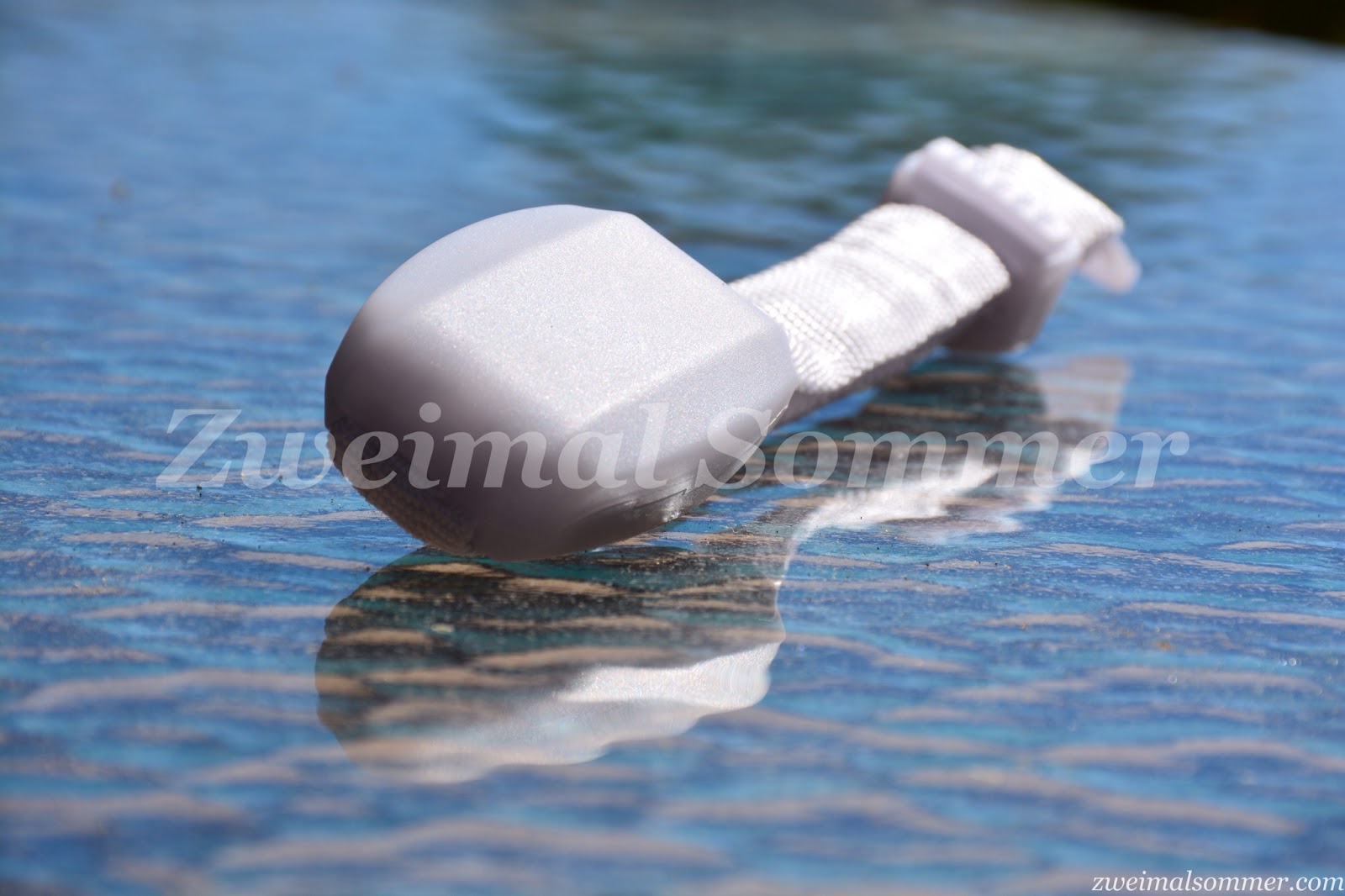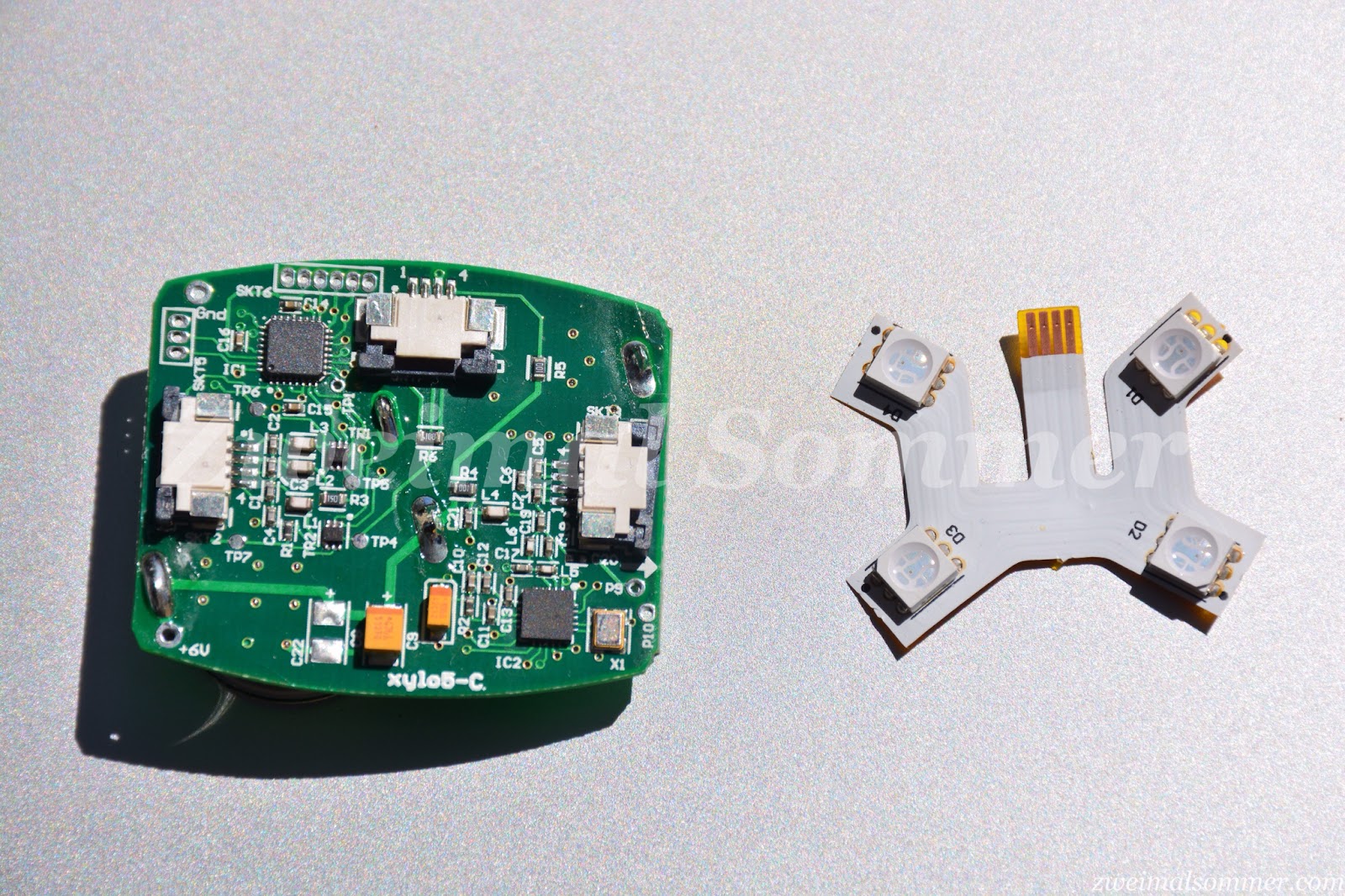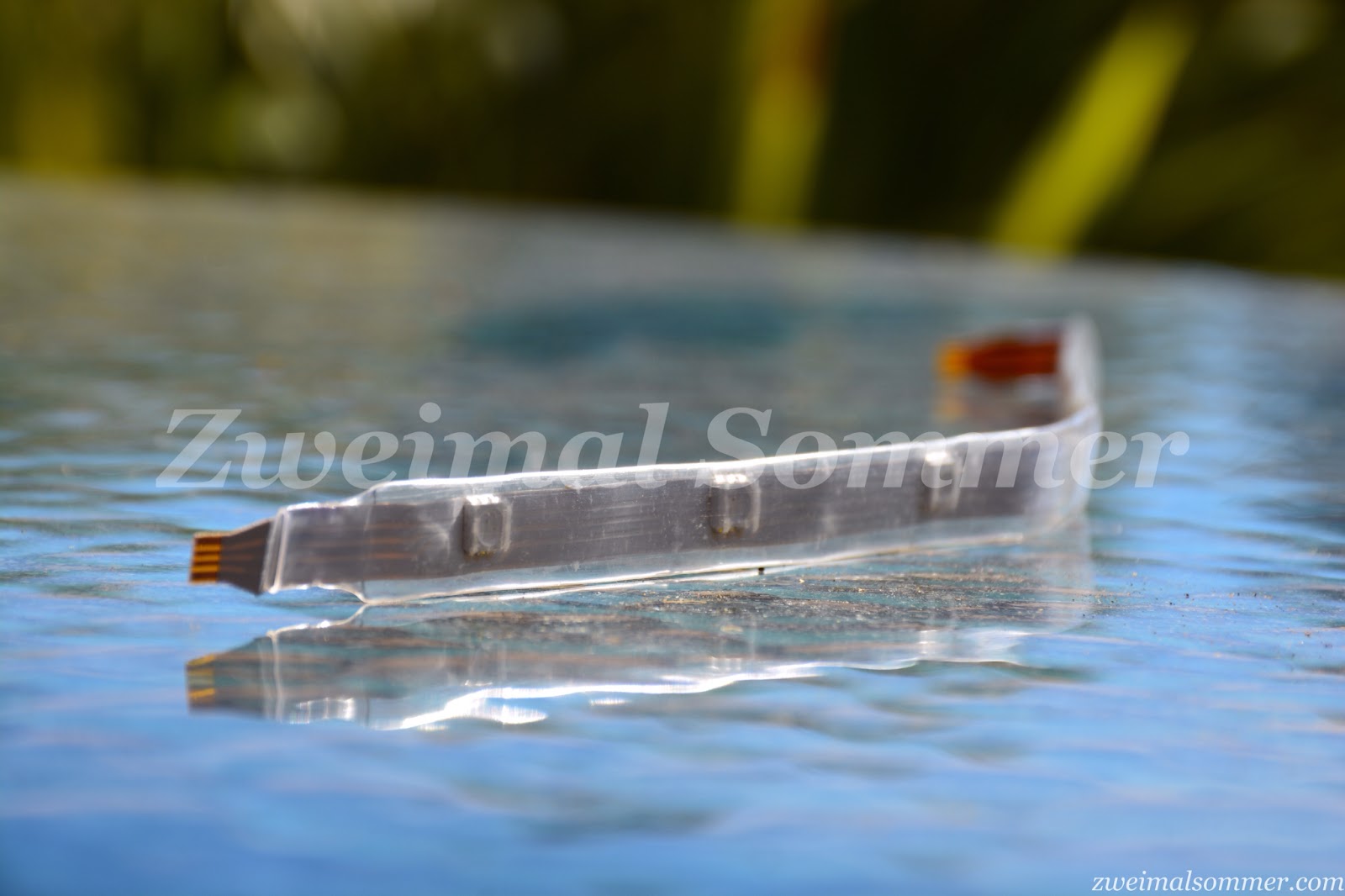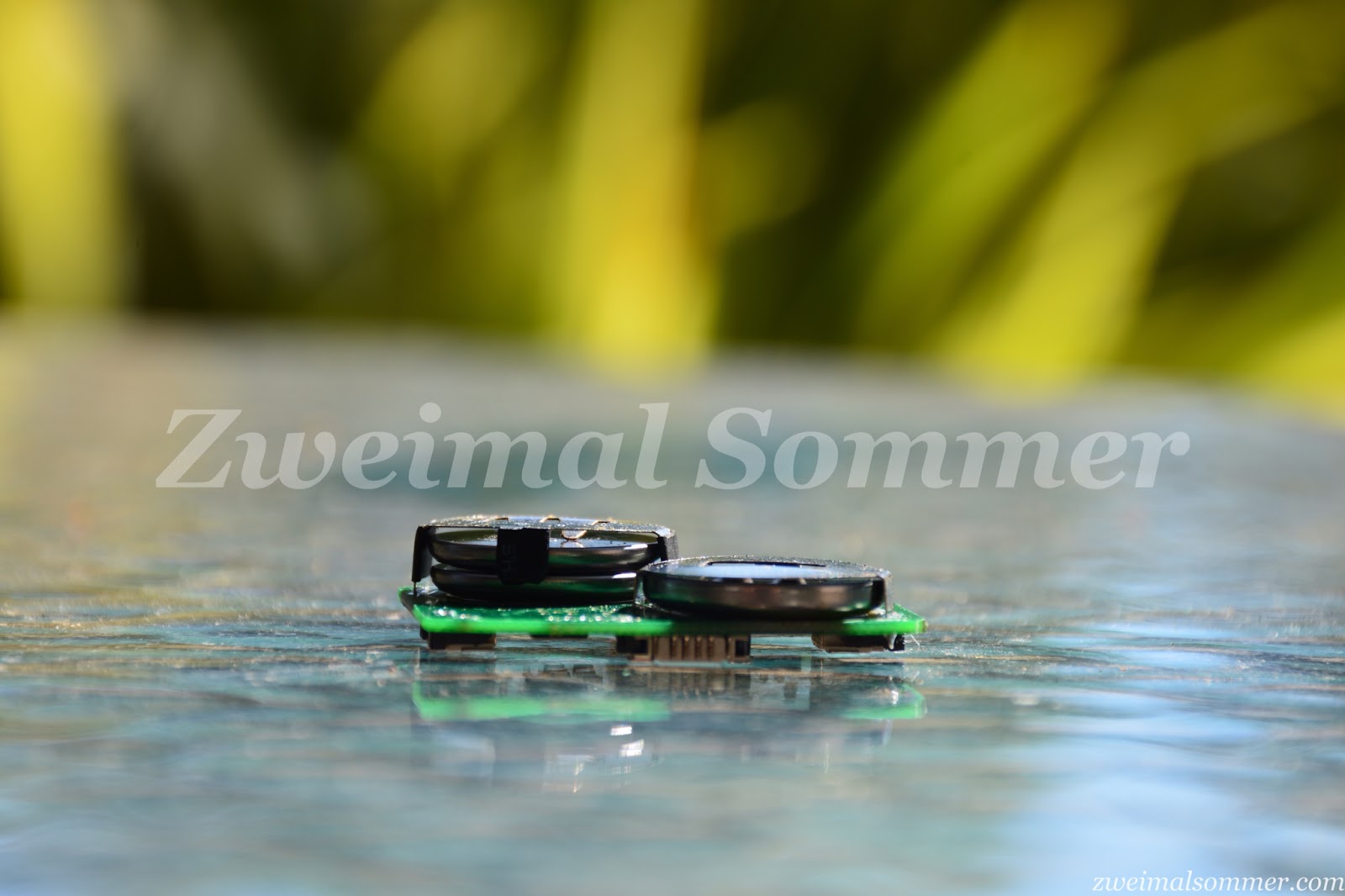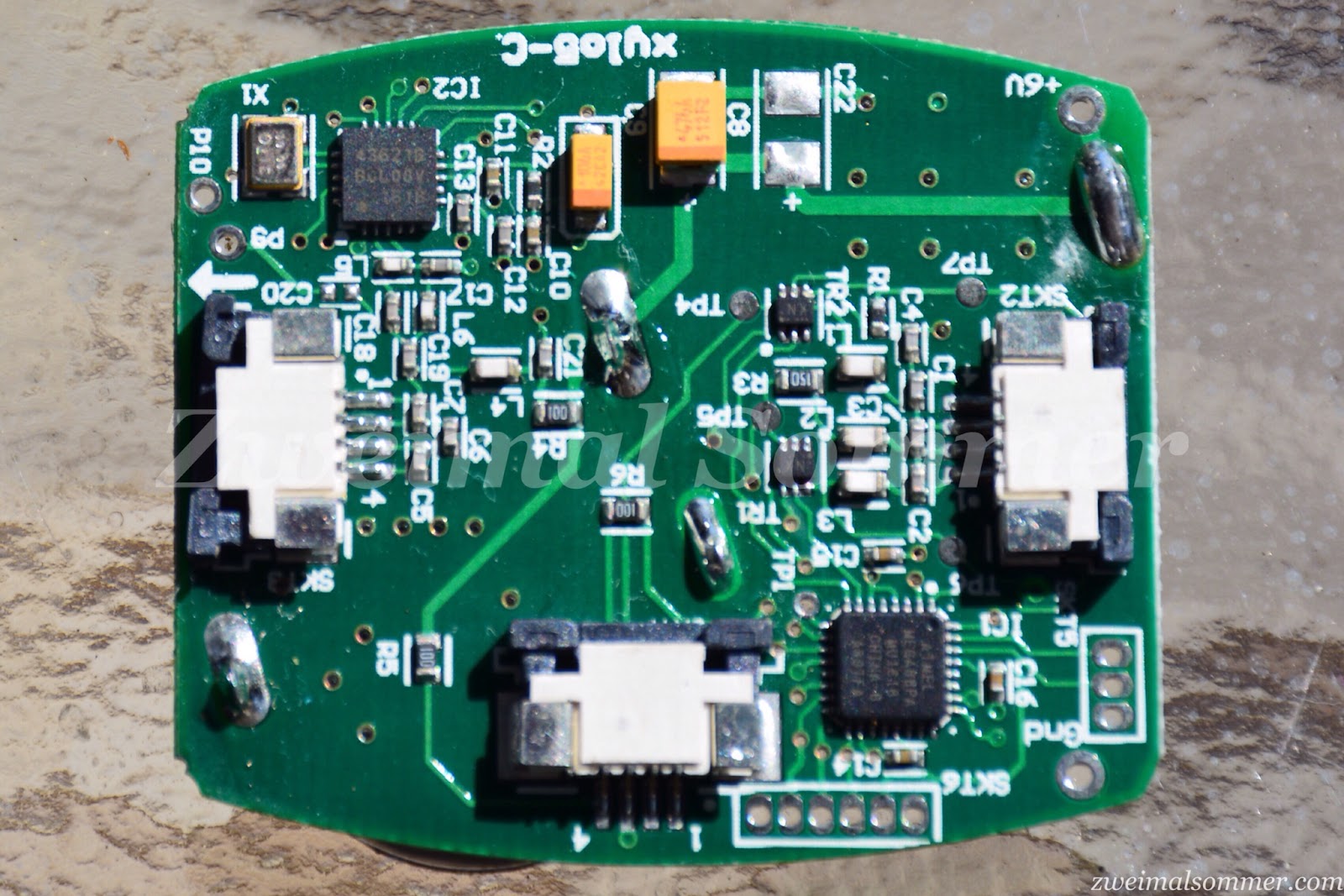This video is for all Facebook-farmers. It reminds to look up:
Coldplay wristband “Xyloband” – a look inside
The Coldplay concert at Rose Bowl was a big show (see http://www.zweimalsommer.com/2016/08/a-rose-bowl-full-of-leds.html). The major element of the show was a wristband which everybody got at the entrance. This wristband is called “Xyloband”. Their homepage shows some other great shows, in which the Xyloband was used: http://xylobands.com/gallery/.
Let’s take a look inside: The main PCB has three ZIF-connectors. A flexible PCB with 4 LEDs is connected to the middle connector.
Another LED-stripe is connected between the two remaining ZIF-connectors. This LED-stripe is the actual wristband.
The main components of the PCB are:
- Atmel 8-bit AVR microcontroller ATmega 88PA, datasheet: http://www.atmel.com/Images/Atmel-42734-8-bit-AVR-Microcontroller-ATmega48PA-88PA-168PA_datasheet.pdf
- Silicon Labs Si4362 RF receiver, datasheet: https://www.silabs.com/Support%20Documents/TechnicalDocs/Si4362.pdf
It is amazing, which light effects can be achieved with this little circuit.
There is an interesting interview with Jason Regler, the inventor of the Xyloband, where he explains that he got the idea for the Xyloband in 2005 during the song “Fix You”, which Coldplay played at the Glastonbury Festival: http://www.coldplay.com/newsdetail.php?id=906. The song text “…lights will guide you home…” was his inspiration.
Movie or Reality?
Everybody who has seen the “Terminator” movies will recognize this company name. This is real!
Other companies like Boston Dynamics produce even more realistic robots, more and more similar to humans.
Worlds longest flight
Emirates has launched the worlds longest flight – non-stop between United Arab Emirates and New Zealand. The flight from Auckland to Dubai takes 17:15 h. Incredible!
“Thermal runaway” of Lithium batteries
A German actress is happy that she is still alive because the Lithium battery of her smartphone started burning on the couch in the morning and the whole apartment burned out. This is the original German article.
http://www.vip.de/cms/wegen-smartphone-ex-soap-star-tanja-wenzel-bei-wohnungsbrand-verletzt-2607658.html
This problem is related to Lithium batteries in general and can happen in any smartphone, laptop, etc.
A German documentary shows the “thermal runaway” effect of Lithium cells.
Google Chrome notebook endurance test
A great endurance test of Google Chrome notebooks, highlighting the advantages of cloud-based computing. 25 notebooks were damaged in this video.

